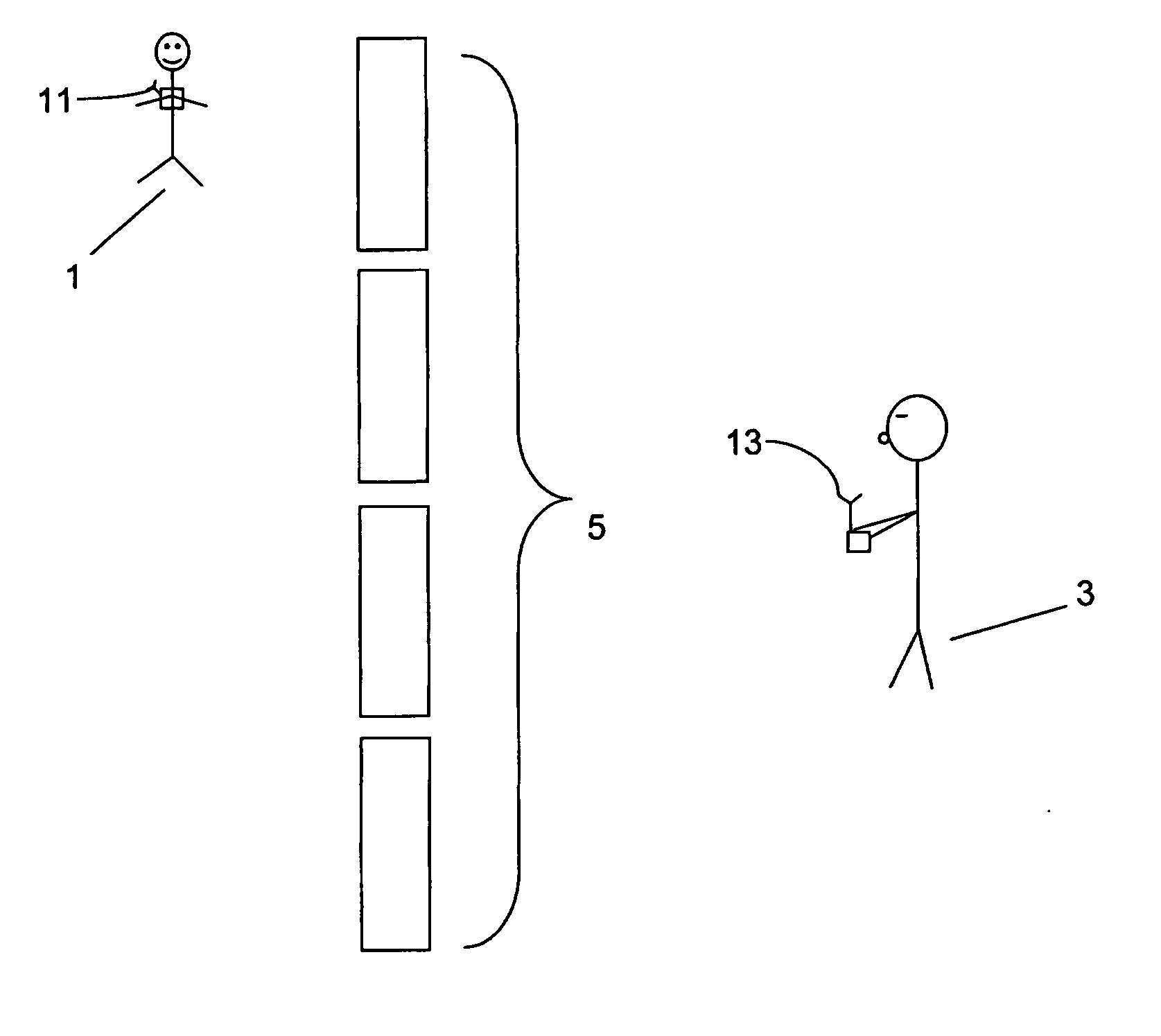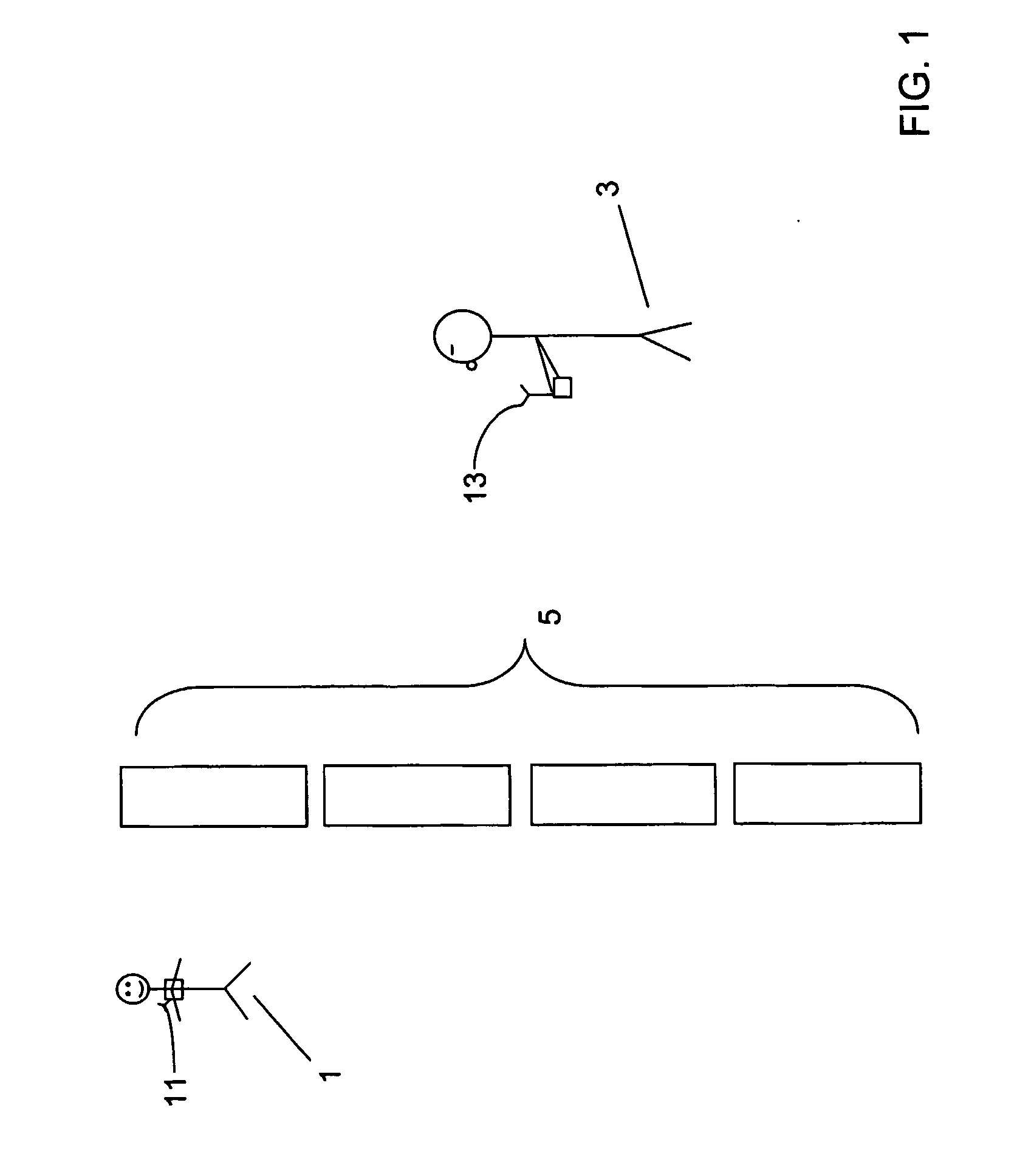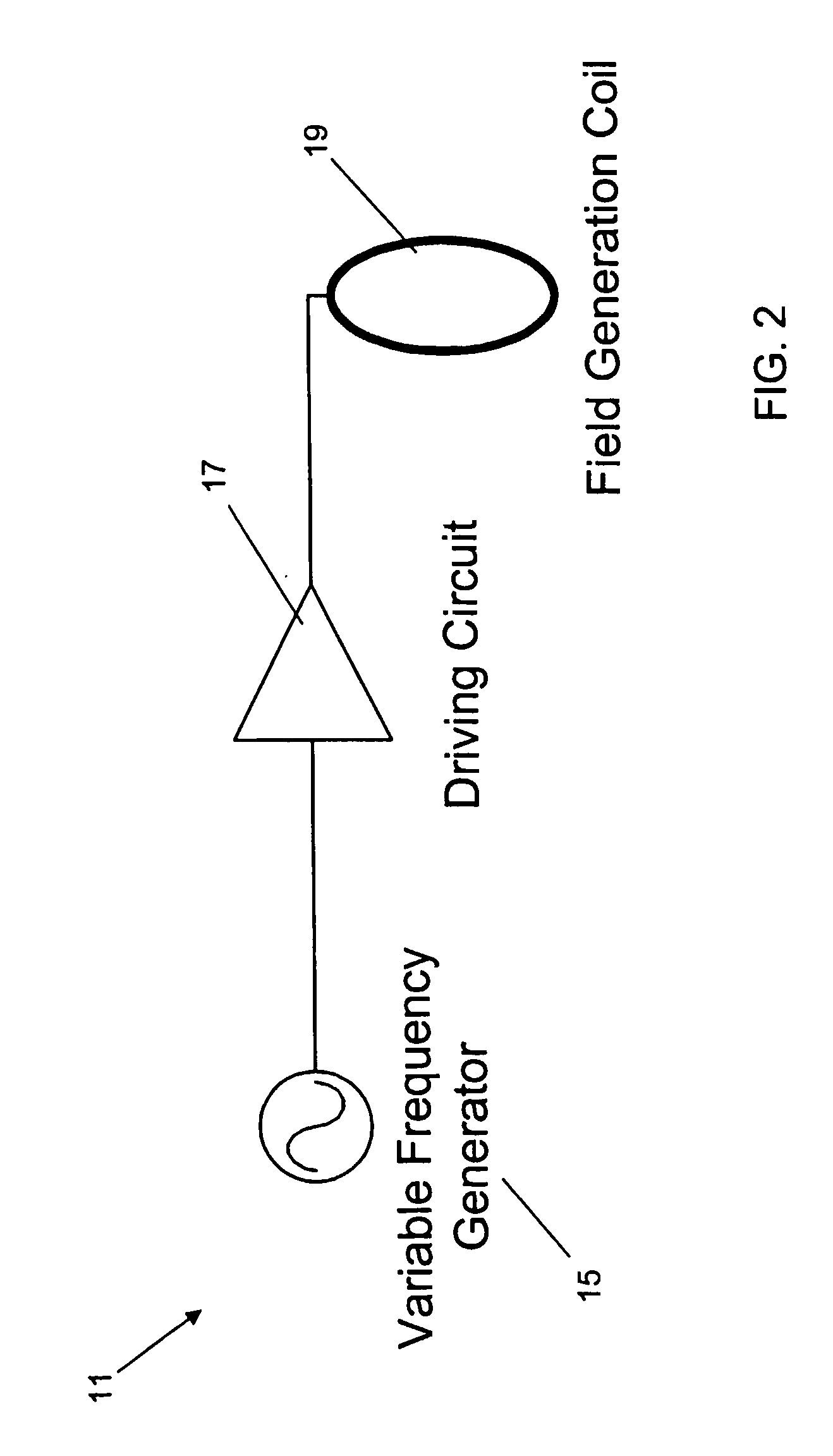Proximity detecting apparatus
a detecting apparatus and proximity technology, applied in the field of proximity detecting apparatuses, can solve the problems of increasing complexity and cost, difficult to achieve most ground-based location determining systems, and high accuracy
- Summary
- Abstract
- Description
- Claims
- Application Information
AI Technical Summary
Benefits of technology
Problems solved by technology
Method used
Image
Examples
Embodiment Construction
[0029] Embodiments of proximity detecting apparatus according to the invention will now be described for an example scenario in which the degree of proximity between a child and a guardian is monitored by equipment associated with the guardian. Referring to FIG. 1, the child 1 and guardian 3 are located in a crowded area comprising obstacles, several doorways and passageways (shown collectively as part 5 in FIG. 1). The child 1 is equipped with a radio frequency (RF) transmitter 11 and the guardian is holding a radio frequency (RF) receiver 13. The components and operation of the RF transmitter and RF receiver 11, 13 will be described in detail below, but in overview, the RF transmitter 11 transmits low frequency signals either constantly or in response to an external input. The signals so transmitted are received by the RF receiver 13, which comprises one or more antenna coils and measures the output from each coil, then amplifies, mixes to an intermediate frequency for filtering a...
PUM
 Login to View More
Login to View More Abstract
Description
Claims
Application Information
 Login to View More
Login to View More - R&D
- Intellectual Property
- Life Sciences
- Materials
- Tech Scout
- Unparalleled Data Quality
- Higher Quality Content
- 60% Fewer Hallucinations
Browse by: Latest US Patents, China's latest patents, Technical Efficacy Thesaurus, Application Domain, Technology Topic, Popular Technical Reports.
© 2025 PatSnap. All rights reserved.Legal|Privacy policy|Modern Slavery Act Transparency Statement|Sitemap|About US| Contact US: help@patsnap.com



